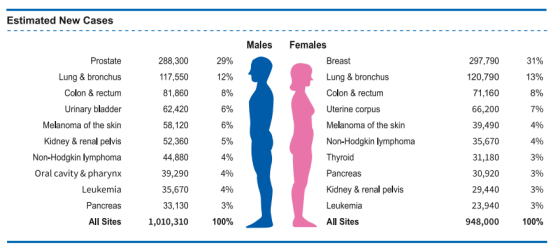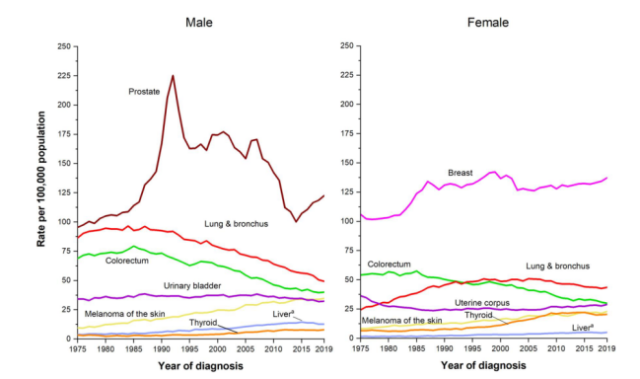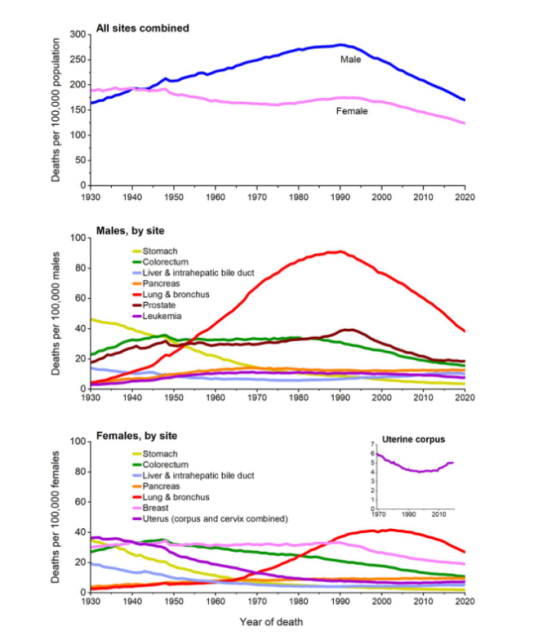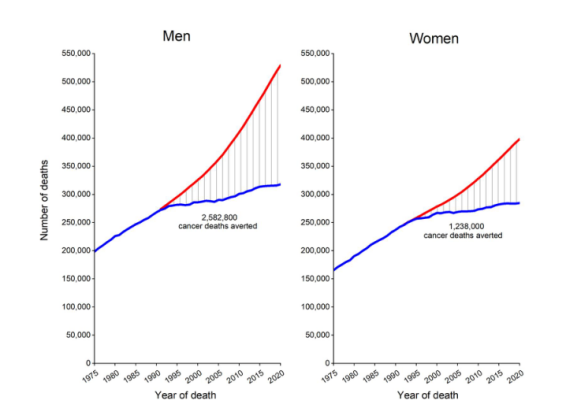2023 America Cancer report: The mortality rate has dropped by 33% in 32 year
- Engineered Soybeans with Pig Protein: A Promising Alternative or Pandora’s Dish?
- Severe Fever with Thrombocytopenia Syndrome (SFTS): A Tick-Borne Threat with High Mortality
- Why Isolating Bananas Extends Their Shelf Life?
- This common vitamin benefits the brain and prevents cognitive decline
- New report reveals Nestlé adding sugar to infant formula sold in poor countries
- Did Cloud Seeding Unleash a Deluge in Dubai?
2023 America Cancer report: The mortality rate has dropped by 33% in 32 year
- Red Yeast Rice Scare Grips Japan: Over 114 Hospitalized and 5 Deaths
- Long COVID Brain Fog: Blood-Brain Barrier Damage and Persistent Inflammation
- FDA has mandated a top-level black box warning for all marketed CAR-T therapies
- Can people with high blood pressure eat peanuts?
- What is the difference between dopamine and dobutamine?
- How long can the patient live after heart stent surgery?
2023 America Cancer report: The mortality rate has dropped by 33% in 32 year.
2023 annual cancer statistics report in the United States, 3.8 million cancer patients will be saved from death.
Every year, the Centers for Disease Control and Prevention (CDC), the North American Association of Central Cancer Registries (NAACCR), the American Cancer Society (ACS), and the National Cancer Institute (NCI) jointly release the National Cancer Data Annual Report, which provides information on the incidence of cancer in the United States. Rate and mortality data update.
On January 12, 2023, the American Cancer Society released the latest “Cancer Statistics Report 2023” as scheduled: from the peak in 1991 to the most recent 2020, the combined cancer death rate for men and women has dropped by 33%, and the number of cancer deaths This reduction averted approximately 3.8 million deaths!

The coronavirus (COVID-19) pandemic has resulted in delays in cancer diagnosis and treatment due to healthcare facility closures, job losses, insurance interruptions, and fear of catching COVID-19.
Although the peak of the 2020 COVID-19 impact has passed, healthcare delivery has not yet fully recovered.
For example, surgical oncology at Massachusetts General Hospital in the second half of 2020 is 72% of 2019, and only 84% in 2021.
Delays in diagnosis and treatment can lead to increased rates of advanced disease and mortality.
This time, Cancer Statistics 2023 estimates the number of new cancer cases and deaths in the United States this year, as well as a comprehensive overview of cancer occurrence based on the latest population data on cancer incidence and mortality.
In 2023, about 5,370 new cases and 1,670 deaths are expected every day
In 2023, the United States is expected to have a total of approximately 1,958,310 new cancer cases, which equates to approximately 5,370 new cases per day.
In addition, there will be approximately 55,720 new cases of ductal carcinoma in situ and 89,070 new cases of melanoma in situ of the skin in women. Among them, the lifetime probability of invasive cancer in men (40.9%) was slightly higher than that in women (39.1%).

Estimated New Cancer Cases by Sex in the United States in 2023 Top 10 Major Cancer Types
By 2023, 609,820 people in the United States will die from cancer, which equates to 1,670 deaths per day.
Lung, prostate and colorectal cancers accounted for the most deaths among men and among women.
The higher risk of most cancer types in men is thought to largely reflect exposure to carcinogenic environmental and behavioral factors (such as smoking).
Of the 127,070 lung cancer deaths by 2023, approximately 103,000 (81%) will be directly attributable to smoking and another 3560 to secondhand smoke.
Cancer death rates continue to decline, with an overall decline of 33% since 1991
Reductions in smoking and improvements in the early detection and treatment of certain cancers have led to a decline in cancer mortality. T
he 5-year relative survival rate for all cancers increased from 49% in the mid-1970s to 68% between 2012 and 2018.
Survival rates were highest for cancers of the thyroid (98%), prostate (97%), testis (95%) and melanoma (94%), and cancers of the pancreas (12%), liver and esophagus (21%) lowest.
From 2007 to 2014, the incidence of prostate cancer fell by about 40%.
Since the mid-2000s, the incidence of breast cancer in women has slowly increased by about 0.5% per year.
Since 2006-2007, the incidence of lung cancer has declined at a steady rate of 2.6% per year for men and 1.1% per year for women.
The incidence of non-Hodgkin’s lymphoma fell by about 1% per year between 2015 and 2019, and melanoma and liver cancer have stabilized.
Cervical cancer rates have more than halved since the mid-1970s due to widespread adoption of screening.

Trends in Cancer Incidence Rates by Sex in the United States, 1975-2019

Trends in Cancer Mortality Rates by Sex in the United States, 1930-2020

Cancer deaths averted between 1991 and 2020
The shaded area in the graph represents the number of deaths avoided. The blue line represents the actual number of cancer deaths recorded each year; the red line represents the expected number of cancer deaths if cancer mortality remained at its peak .
1. Lung cancer
Lung cancer is the leading cause of cancer death. Among cancer deaths recorded in 2020, lung cancer was the leading cause of cancer death in both men and women aged 50 and over, accounting for far more deaths than breast, prostate and colorectal cancer combined.
From 2006 to 2007, the incidence of lung cancer has declined steadily, with an annual decrease of 2.6% for men and 1.1% for women.
From 1990 to 2020, the death rate from lung cancer in men fell by 58 percent; from 2002 to 2020, the death rate from lung cancer in women fell by 36 percent.
The 3-year relative survival rate for all stages of lung cancer increased from 22% in 2004 to 2006 to 33% in 2016 to 2018, and the progression of non-small cell lung cancer (from 25% to 38%) far exceeded that of small cell lung cancer (from 9% to 12%).
Early detection of lung cancer, advances in surgical procedures, more accurate pathological staging, and the development of lung cancer-targeted immune drugs have increased the survival rate of lung cancer.
2. Prostate cancer
Prostate cancer alone is projected to account for 29% of diagnoses among the most common cancers diagnosed in men in 2023.
From 2007 to 2014, the incidence of prostate cancer fell by about 40%, due to a decline in the diagnosis of localized tumors by PSA testing.
Its prevalence declined after the U.S. Preventive Services Task Force (USPSTF) recommended screening of men 75 and older in 2008, followed by screening of all men in 2012.
Based on early prostate cancer screening while reducing overdiagnosis and overtreatment, in 2018 the USPSTF recommended more targeted screening for men aged 55-69 using molecular markers and magnetic resonance imaging-targeted biopsy.
3. Breast cancer
Since the mid-2000s, the incidence of breast cancer in women has slowly increased by about 0.5% per year, a trend that is partly attributable to continued declines in fertility and increases in overweight.
Female breast cancer mortality peaked in 1989 and has since declined by 43%, due to earlier diagnosis through mammography and increased awareness, as well as improved treatment.
The rate of decline in breast cancer mortality has slowed in recent years, from 2% to 3% per year in the 1990s and 2000s to 1% per year between 2011 and 2020.
4. Colorectal cancer
Colorectal cancer is the third most common cause of cancer death in both men and women. Since 1980, the death rate has fallen by 55% for men and 61% for women since 1969. CRC mortality among women had been declining until 1969, but the earlier data years did not exclude deaths from small bowel cancer.
In the last decade (2011-2020), the CRC mortality rate has decreased by approximately 2% per year. However, mortality rates increased among young adults; from 2005 to 2020, CRC mortality rates continued to increase by 1.2% per year for those under 50 years of age and 0.6% per year for those aged 50-54 years.
5. Pancreatic cancer
The third leading cause of cancer death in both men and women is pancreatic cancer, with rates slowly increasing in men, from 12.1 (per 100,000 men) in 2000 to 12.7 per 100,000 men in 2020, but remaining relatively Stable at 9.3-9.6 cases per 100,000 women.
6. Cervical cancer
Cervical cancer rates have more than halved since the mid-1970s due to widespread adoption of screening. Cervical cancer is one of the most preventable cancers, and HPV vaccination can almost eliminate cervical cancer.
7. Childhood and adolescent cancer
In the United States, cancer is the second most common cause of death among children ages 1-14, after accidents, and the fourth most common cause of death among adolescents (ages 15-19).
By 2023, an estimated 9910 children (birth to 14 years) and 5280 adolescents (15-19 years) will be diagnosed with cancer, and 1040 and 550, respectively, will die from the disease. About 1 in 260 children and adolescents will be diagnosed with cancer before the age of 20.
Leukemia was the most common childhood cancer, accounting for 28% of cases, followed by brain and other nervous system tumors (26%), nearly a third of which were benign or borderline malignant.
References:
1. https://doi.org/10.3322/caac.21763
2023 America Cancer report: The mortality rate has dropped by 33% in 32 year
(source:internet, reference only)
Disclaimer of medicaltrend.org
Important Note: The information provided is for informational purposes only and should not be considered as medical advice.



